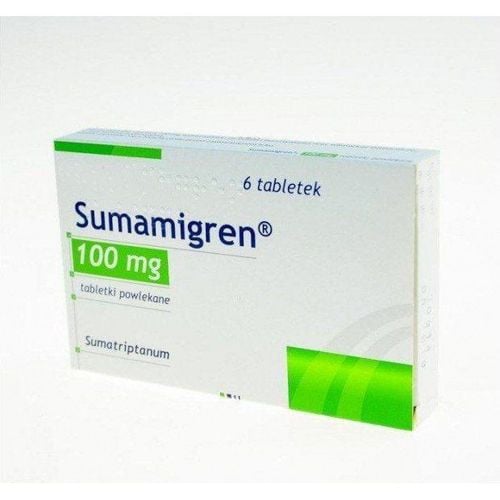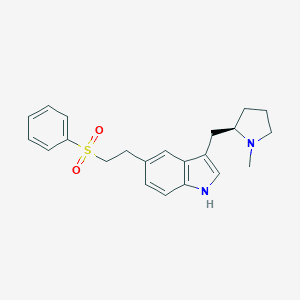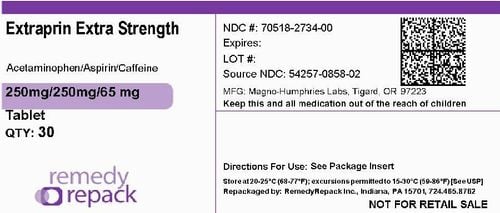This is an automatically translated article.
Hadermik medicine is made in the form of tablets with the main ingredient being Dihydroergotamine mesylate. Hadermik is used to treat some diseases of blood pressure, headaches.
1. What are the uses of Hadermik?
In 1 tablet of Hadermik contains 3mg of Dihydroergotamine mesylate and some other excipients. Dihydroergotamine is a hydrogenated ergotamine (ergot alkaloid) with a relatively complex pharmacological action. Hadermik has an affinity for both alpha-adrenergic and serotoninergic receptors, so it has both stimulant (therapeutic dose) and inhibitory (high dose) effects.
In orthostatic hypotension: Dihydroergotamine has a selective effect on causing vasoconstriction of the containing vessels (veins, venules), almost no effect on the resistance vessels (arteries, arterioles). The drug increases venous tone leading to redistribution of blood, thereby preventing excessive accumulation of blood in the veins.
In migraine: Initially, the drug works to compensate for the lack of serotonin in the plasma. Then, due to the stimulation of the effect of serotonin, it counteracted the loss of tone of the extracranial vasculature, especially the dilated carotid system. For the treatment of migraine attacks, an injection of Dihydroergotamine (rapid-acting) should be administered. For the prevention of migraine attacks, prolonged use of oral tablets to stabilize the tone of the extracranial vasculature is recommended.
Hadermik is rapidly absorbed, has a high affinity for tissues, and is eliminated mainly via the bile and faeces.
Indications for using Hadermik:
Treatment of orthostatic circulatory disorders, primary or secondary hypotension, symptoms such as dizziness or prolonged fatigue; Intermittent therapy to prevent migraines and vasomotor headaches; Used to improve symptoms related to lymphatic insufficiency such as heavy legs, pain, discomfort when starting to lie down. Contraindications to using Hadermik:
People who are sensitive to ergot alkaloids; Patients prone to vasospasm reactions such as peripheral artery disease, coronary artery disease (especially unstable angina), shock, vascular surgery, sepsis, uncontrolled hypertension, liver failure , severe renal failure; Pregnant and lactating women; Combined with vasoconstrictor agents (because it can cause excessive increase in blood pressure).
2. Dosage and how to take Hadermik
How to use:
Patients need to use it orally, take it right before meals, do not take it on an empty stomach. For the best effect in vasomotor headache, the drug must be used as soon as symptoms are evident (in the prodromal phase: If there is a certain symptom or at the onset of pain); The amount of medication required, the speed and extent of pain relief are directly related to the early or late use of the drug; After taking the initial dose, the patient should pay attention to lie down and relax in a dark, quiet place. Dosage: Normally use Dihydroergotamine mesylate with a dose of 1 tablet / time x 3 times / day.
Overdose and treatment:
Up to now, there have not been any reports of acute overdose with Hadermik. Overdose can cause signs and symptoms of ergot toxicity such as: loss of sensation, pain and cyanosis in the extremities with loss of pulse or weak pulse, sharp pain, confusion, shortness of breath, increased or decreased blood pressure, delirium, convulsions and coma, nausea, vomiting, abdominal pain; Management includes: Discontinuing the drug, applying heat to the affected area, giving a vasodilator (phentolamine or sodium nitroprusside) and taking care to prevent tissue damage; Addiction and dependence: There are currently no data demonstrating addiction or psychopathy to Dihydroergotamine. Because of the chronic nature of vasomotor headache, care should be taken to advise patients not to exceed the recommended dose.
3. Side effects of Hadermik
During the use of Hadermik, some side effects may be encountered as follows:
Common: Nausea, vomiting, headache, leg cramps, pain; Uncommon: Anxiety, dizziness, profuse sweating, diarrhea, flushing, rash, dyspnoea, vasospasm, increased blood pressure, paresthesia, pleural and peritoneal fibrosis (long-term treatment); Rare: Cases of cerebrovascular accident, myocardial infarction. Patients should immediately notify their doctor when experiencing any unusual symptoms due to Hadermik medicine for appropriate intervention measures.
4. Precautions when using Hadermik
Some notes for patients to remember before and during the use of Hadermik:
Dihydroergotamine, like many other ergot alkaloids, can cause vasospasm, including angina, but much less frequently. This effect is usually dose related. However, there are some patients who may be very sensitive to the drug. Because prolonged vasospasm can cause necrosis and even death, if the patient has persistent signs and symptoms of vasospasm (cold extremities, loss of sensation in the hands, pallor, cyanosis of the toes). arm), angina or unusual symptoms such as mesenteric ischemia requiring immediate discontinuation of the drug; Dihydroergotamine should only be used for vasomotor migraines, which are ineffective in other types of headaches and have no analgesic properties; When using Hadermik, patients should immediately notify the treating doctor when they have the following signs: Loss of sensation or sharp pain in the fingers, legs, muscle pain in the arms and legs, weakness in the lower extremities, chest pain, transient slow or fast heartbeat, itchy skin, swelling; Use caution when using Hadermik in patients with severe liver failure, severe kidney failure who are not on dialysis; Health monitoring should be enhanced when taking Hadermik in patients with a history of arterial disease; A small amount of Dihydroergotamine when crossing the placenta, although not directly adversely affecting the fetus, can cause uterine vascular constriction, increase uterine muscle tone, decrease uterine and placental blood flow, prevent interfere with fetal development. The drug Hadermik is contraindicated for pregnant women; Hadermik is an ergot mushroom that inhibits prolactin. Dihydroergotamine excreted in breast milk can cause vomiting, diarrhea, weak pulse, unstable blood pressure. Therefore, do not breast-feed while using Dihydroergotamine; Patients with a history of dizziness or central nervous system disorders should not operate machinery or drive while taking Hadermik.
5. Hadermik drug interactions
Some of Hadermik's drug interactions include:
Dihydroergotamine should not be used concurrently with vasoconstrictor or sympathomimetic drugs, as it will increase blood pressure excessively; Erectile dysfunction has vasoconstrictor properties. Beta-blockers block beta 2 sympathomimetic, thereby also causing vasoconstriction and decreased blood flow due to decreased cardiac output. Use caution when combining these two drugs; Nicotine may cause vasoconstriction in some patients, increasing the risk of ischemic ergotism; When using the combination of Hadermik with macrolide antibiotics (erythromycin, ponsinomicyn, josamycin, triacetyloleandomycin) can cause rapidly increasing ergot toxicity; Dihydroergotamine is an antagonist of the vasodilator effects of glyceryl trinitrate (nitroglycerin); Co-administration of ergot with methysergid increases the risk of arterial spasm in some patients; Concomitant use of Hadermik with Bromocriptine may cause vasoconstriction or paroxysmal hypertensive crisis; Co-administration of Hadermik with Sumatriptan may increase the risk of coronary artery spasm. Care should be taken to keep a period of at least 24 hours from discontinuing Dihydroergotamine until Sumatriptan is taken, and also note that Hadermik is only taken 6 hours after Sumatriptan is taken. When using Hadermik, patients should pay attention to follow the instructions of the treating doctor, read the instructions carefully before using it to achieve high therapeutic effect, and limit the risk of unexpected problems. would like.
Follow Vinmec International General Hospital website to get more health, nutrition and beauty information to protect the health of yourself and your loved ones in your family.
Please dial HOTLINE for more information or register for an appointment HERE. Download MyVinmec app to make appointments faster and to manage your bookings easily.













